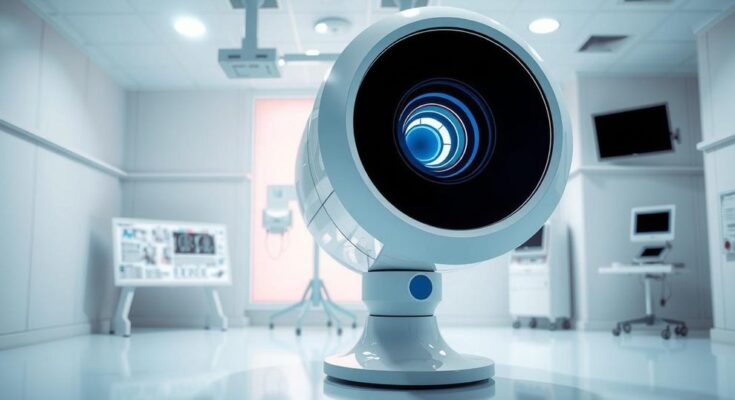The IAEA donated a SPECT camera to a hospital in Niteroi, Brazil, doubling its heart scan capacity and improving access for over two million people. This advancement reduces waiting times for vital heart exams significantly and enhances training for medical professionals, addressing the pressing health needs in the region.
The donation of a Single Photon Emission Computed Tomography (SPECT) camera by the International Atomic Energy Agency (IAEA) has significantly enhanced the capabilities of a hospital in Niteroi, Brazil. This advancement has doubled the hospital’s heart scan capacity, thereby providing life-saving health services to over two million underserved residents in the region.
Globally, cardiovascular diseases stand as the primary cause of mortality, and Brazil is no exception, with heart ailments such as heart attacks contributing greatly to population health concerns. Preventative measures, including lifestyle modifications, along with specialized tests like nuclear medicine, play an essential role in early detection and have been instrumental in reducing fatalities associated with heart failure.
SPECT is a nuclear medicine technique that employs gamma rays to create three-dimensional images of organ functions and structures within the body. According to Enrique Estrada Lobato, a nuclear medicine physician in the IAEA Division of Human Health, “In cardiology, SPECT tomography is standard to diagnose coronary artery disease and wall abnormalities.” Myocardial perfusion imaging (MPI), a type of SPECT test, effectively assesses blood flow to the heart muscle.
The Hospital Universitário Antônio Pedro (HUAP) is the sole public hospital in Niteroi, offering nuclear medicine services. Previously, HUAP operated with a 12-year-old, single-headed gamma camera which resulted in prolonged examination times, causing delays in patient care and extensive backlogs. The facility was struggling to keep up with an overwhelming demand, with waiting periods for exams extending beyond eight months.
Following comprehensive assessments by IAEA QUANUM in 2013 and 2017, which reviewed nuclear medicine procedures, a recommendation was issued to upgrade HUAP’s equipment. In 2022, the Brazilian National Nuclear Energy Commission sought assistance from the IAEA, resulting in the installation of a dual-head gamma camera with IQ-SPECT technology in August 2023.
This transformative donation resulted in remarkable efficiency improvements; MPI scans that previously took over 20 minutes now require only 6 to 7 minutes, effectively shortening the waiting list significantly. As a result, more than 1,000 additional patients gained access to crucial nuclear medicine services within the first 10 months of installation, as highlighted by Claudio Tinoco Mesquita, Associate Professor of Radiology at Universidade Federal Fluminense.
Moreover, the new equipment facilitated advanced training for nuclear medicine professionals and initiated a residency program for medical physicists, who are essential for conducting these exams. “This is a success story that connects the quest for quality and the fight to improve access to health services for poor people in Brazil,” Mesquita stated. The IAEA’s support has played a transformative role in enhancing practice and positively influencing patient health.
The IAEA continues to provide support for noncommunicable disease management, including cardiovascular conditions, through its technical cooperation and human health programs. The agency also emphasizes the importance of quality management systems to ensure safety and quality in nuclear medicine services.
The introduction of a new SPECT camera at the Hospital Universitário Antônio Pedro has substantially improved heart diagnostic capabilities in Niteroi, Brazil. This upgrade not only increased the hospital’s capacity to provide essential nuclear medicine procedures but also reduced patient waiting times significantly. Furthermore, the educational opportunities for medical professionals have expanded, strengthening the healthcare infrastructure in a region that serves a highly underserved population. The IAEA’s contribution has proved invaluable in enhancing public health access and outcomes.
Original Source: www.miragenews.com




